Sharp market drops followed by stunning recoveries provided a casino like atmosphere on Wall Street during the past week.
We initiated a hedge for our Trend Tracking Portfolio (#1). Unfortunately, the bulls showed some life again during the past 5 trading days, after the bears were dominant, which proved to be drag on our hedged position. Consequently, this particular portfolio is now positioned in the middle of the pack.
Leading, since it had been added recently, is Portfolio #7, which represents the ETF equivalent of PRPFX. It’s up YTD by a remarkable +10.68%, far ahead of all other models. Since I am tracking it daily, I can tell you that it holds up better during downturns in the market, but it lags somewhat when the upside comes into play.
Take a look at the details:
1. ETF Trend Tracking Model Portfolio
This is the portfolio allocation I predominantly use in my advisor practice. Given current market conditions, and an ever growing number of global hotspots, I like the concept of having a solid core holding in PRPFX, although with the recent slide, it slipped as well but managed to remain far more stable than the S&P 500 index.
Around this fund, I have added what I call boost components consisting of ETFs that can produce higher returns than my core holding, at least during bullish periods. When a market pullback occurs, the core holding should add an element of stability.
Nevertheless, as you know from my writings, anything I invest in involves the use of trailing sell stops, which are shown and tracked on the upper right of the table.
Last week, this portfolio was up YTD +3.44% vs. +3.27% as of today. As you can see, I have added the short position SH and turned the PRPFX holding into a hedge, so we have a different scenario to look at here compared to the other portfolio choices.
2. Conservative ETF Growth Portfolio
This portfolio, as are the following ones, would be typical of what is being used in the buy-and-hold community, as you can see by the 40% allocation to various bond ETFs. If you are conservative, this simple combination could work for you, but I still recommend the use of the trailing sell stops during these uncertain times.
Last week, this portfolio was up YTD +2.49% vs. +2.53% as of today.
3. Aggressive ETF Growth Portfolio
What makes this one aggressive is the small 15% allocation to bonds. If you have an aggressive streak in your personality, you could consider this one. If you use my recommended sell stop discipline, you know exactly ahead of time what your downside risk will be.
Last week, this portfolio was up YTD +3.54% vs. +4.06% as of today.
4. Moderate ETF Growth Portfolio
I call this one moderate growth, because of the higher allocation to various bond ETFs (26%) than in the aggressive set up above. It is also more diversfied domestically.
Last week, this portfolio was up YTD +3.60% vs. +4.06% as of today.
5. ETF Income Portfolio
This is as simple as it gets, but due to a reduction of half of its holdings, this portfolio has slipped into the #5 spot. During the recent sell-off, it dropped in value quickly due to no offsetting bond positions and now shows only a 50% invested balance. Be sure to use a 7% sell stop on the remainder of these holdings.
Last week, this portfolio was up YTD +0.15% vs. +0.15% as of today, and we are in a 100% cash position.
6. The Ivy ETF Portfolio
If you missed the recent post about the Ivy portfolio, you can read it here.
This is a simple 5-asset class portfolio with each individual component being bought when it crosses its respective trendline to the upside. Each component is being sold once it crosses its trend lines to the downside again, according to the author’s rules.
I have made 3 adjustments:
1. I apply a 39-week Simple Moving Average (SMA) to generate the Buys, while the authors use a 45-week SMA.
2. As mentioned in the blog post, I prefer using my trailing sell stop discipline for my exit strategy.
3. Personally. I favor using BND (as opposed to IEF) as my bond component, since it has shown more stabilty in the past.
This portfolio was also affected by the sale of DBC. I will re-enter this position once it has taken out its old high of 31.92 to be sure that any rebound is not just another headfake.
Last week, the Ivy portfolio was up YTD +1.70% vs. +1.76% as of today.
7. The ETF Equivalent of PRPFX
As posted recently, I have created and backtested the ETF equivalent of my favorite mutual fund, PRPFX, which is a core holding in my #1 Portfolio. If you missed it, you can read the announcement here.
Take a look at the combination of ETFs:
In the current market environment, where just about all equity indexes have lost, this portfolio has bucked the trend and produced a remarkable result. While this is only one moment in time, and there are no guarantees that this will continue, we need to work here too with a trailing sell stop discipline to guard against excessive downside risk.
Since these 8 ETFs represent only one fund, namely PRPFX, we need to apply a different exit stratgey. For that purpose, I will not track the high points made for each ETF, as with the other 6 models, but measure my drop from the high point this entire portfolio has made. Currently, it is up by +10.68% YTD.
(ETF trading costs are not included in these portfolios demonstrations.)
To repeat, the key to selecting a portfolio from the above list is not just performance. Personally, I’d rather lag a little on the upside but have some assurance that I will also lag when the downside comes into play.
This will help you to sidestep whipsaw signals on occasion, which are caused by temporary market pullbacks followed by a subsequent resumption of the previous up trend.
The reason that these portfolio have held up far better than the S&P 500 is the fact that we no longer have volatile positions due to those having been stopped out. Therefore, we are in a higher cash/hedged position as well, which will change once bullish tendencies return.
I will update these portfolios every Wednesday and inform you via email that the updated versions have been posted.
Quick Reference:
Contact Ulli
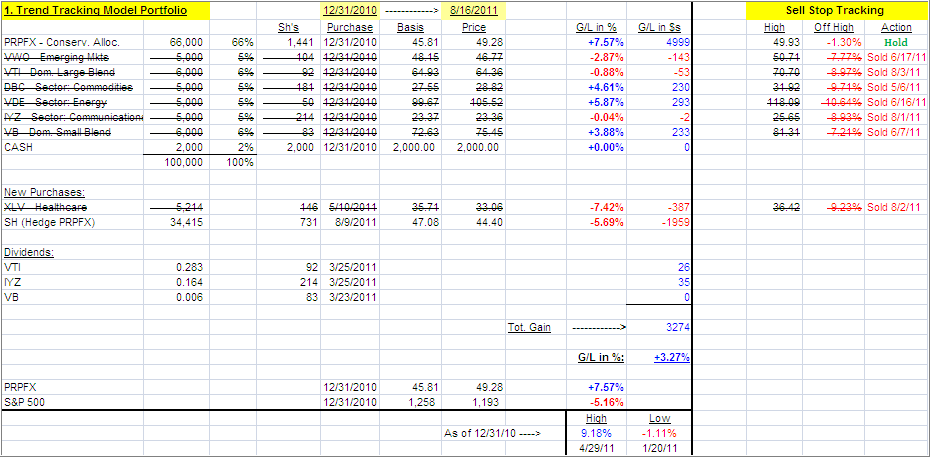
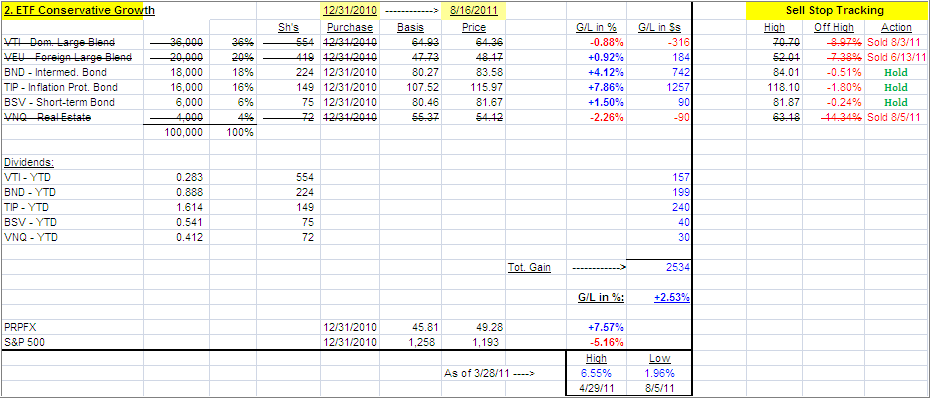
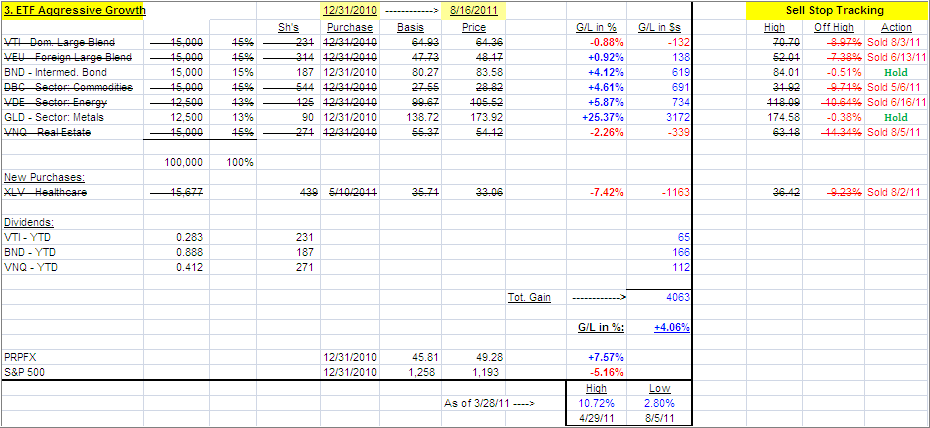
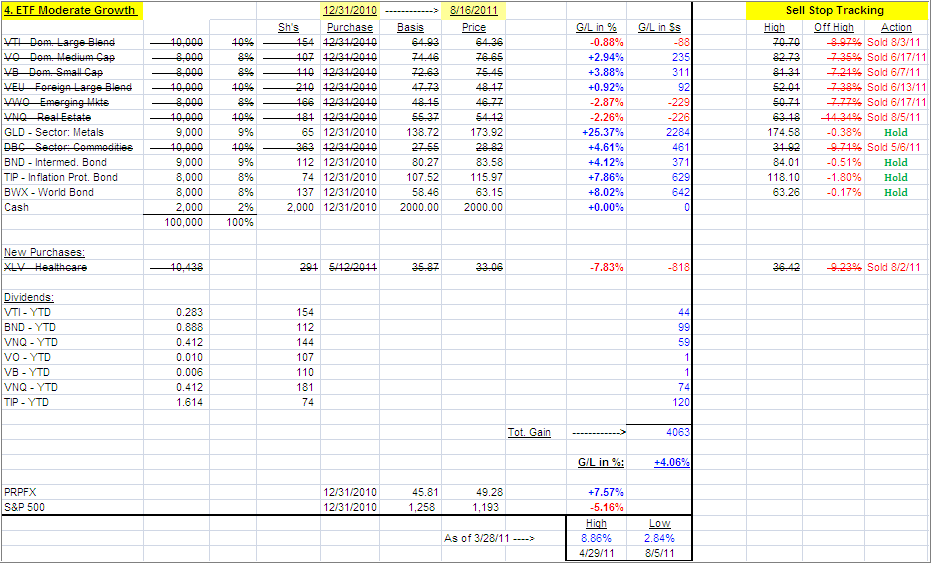
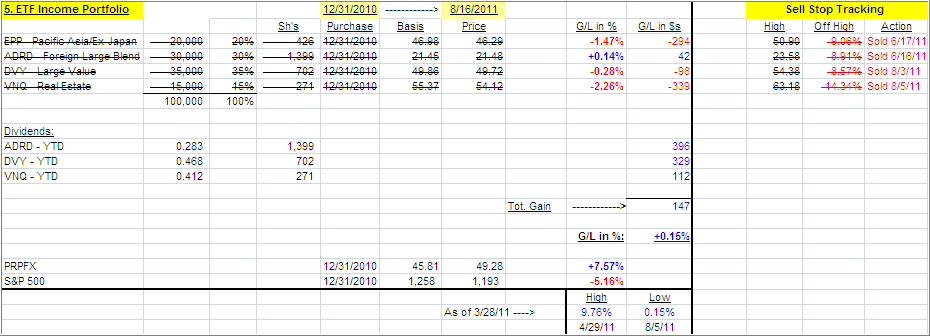
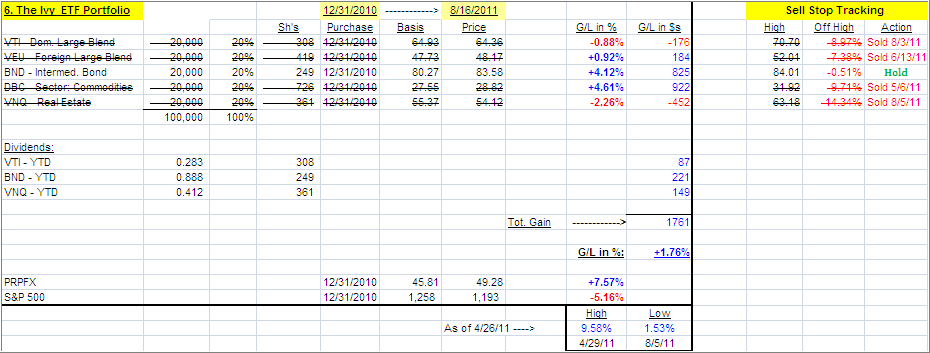
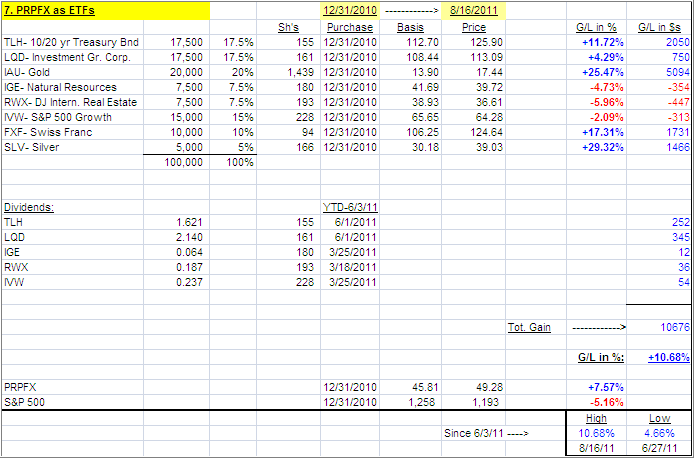
Comments 2
Ulli,
I’m new to your site. Can you direct me to an older post of yours that explains why you use the 39 week MA vs. the 45 week MA, and the advantages of doing so ( and any disadvantages)?
thanks
Andy,
No particular reason other than that I prefer a shorter M/A along with the use of sell stops.
Ulli…